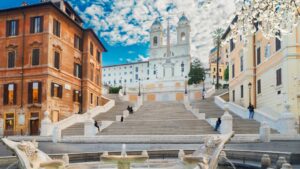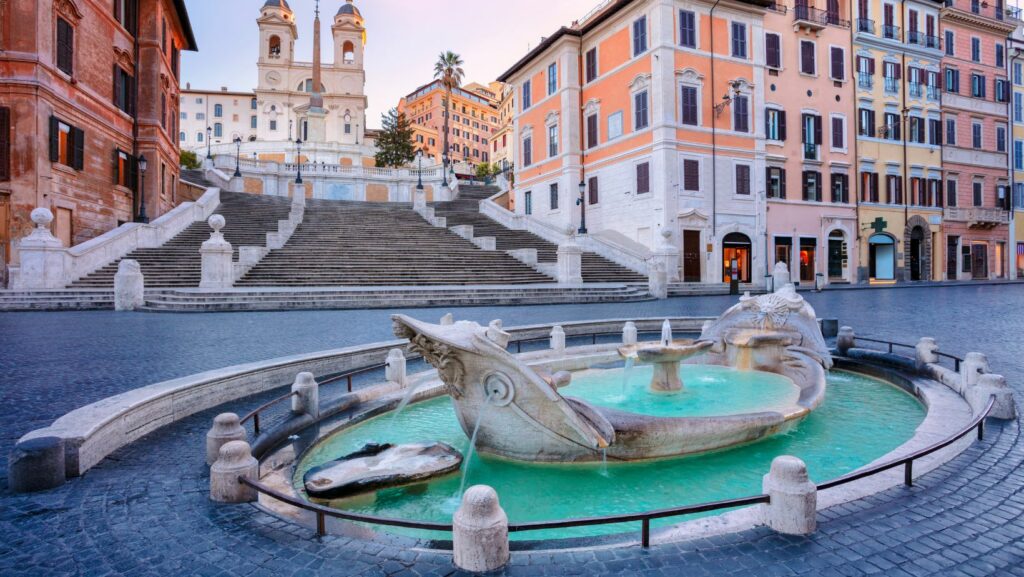Table of Contents
ToggleIn the world of design and construction, Spanish architecture holds a unique place. It’s a style that seamlessly blends functionality with aesthetic appeal, capturing centuries of history and culture in its lines and forms. From the grandeur of Gothic cathedrals to the rustic charm of pueblo-style homes, Spanish architecture offers a rich tapestry of design elements to explore.
Spanish Architecture Style
 The Spanish architecture style manifests a rich tapestry of historical influences and cultural nuance. It carries a unique blend of aesthetics paired with distinct functionalities, a testament to a breadth of interconnected historical periods and cultural cross-pollination.
The Spanish architecture style manifests a rich tapestry of historical influences and cultural nuance. It carries a unique blend of aesthetics paired with distinct functionalities, a testament to a breadth of interconnected historical periods and cultural cross-pollination.
The roots of Spanish architectural design run deep into Spain’s colorful history. They lie in the diverse cultures that have inhabited the region over the centuries. Readers see from Roman arches and columns, which signify the time of Roman rule, the intricate patterns and domes of the Moors, an echo of Islamic influence, to the distinctive pointed arches and ribbed vaults of the Gothic era.
Key Characteristics of Traditional Spanish Architecture
Traditional Spanish architecture exhibits a number of defining characteristics. These include the good use of indoor-outdoor spaces, reflecting the country’s sunny climate with patios and courtyards being common features. Terracotta roof tiles, one sees them in red, brown, or yellow, are a common sight, as are white or light-colored exteriors to deflect the hot sun. Heavy, wooden doors and decorative wrought-iron work, found in grilles, gates or balconies, also play a significant role in stamping the Spanish style on properties.
Evolution of Spanish Architecture Style
The Blend of Moorish and European Elements
Spain holds a complex architectural heritage, characterized primarily by an interweaving of Moorish and European details. Dating back to the 8th century, the Islamic Moorish influence brought rounded arches, ribbed vaulting, richly decorated surfaces and intricate geometric patterns. Rife examples of this influence include the Great Mosque of Cordoba and Alhambra Palace in Granada.
Modernism and the Influence of Antoni Gaudí
Modernism posed as a significant turning point in the evolution of Spanish architectural style. Unseen before, this enchanting movement, bursting in the late 19th and early 20th century, took Spanish buildings to new dimensions of creativity and innovation.The linchpin of this dramatic shift was architect Antoni Gaudí. A prominent figure in the Modern Movement, Gaudí infused Spain’s urban landscape with fantastical forms and organic shapes.
Defining Features of Spanish Architecture Style
 Embodying a rich cultural history, Spanish Architecture brings forth a unique blend of stylistic elements and design techniques. This section outlines three defining features of the Spanish Architecture Style: the use of local materials, outdoor spaces and courtyards, and distinctive roof designs and arcades.
Embodying a rich cultural history, Spanish Architecture brings forth a unique blend of stylistic elements and design techniques. This section outlines three defining features of the Spanish Architecture Style: the use of local materials, outdoor spaces and courtyards, and distinctive roof designs and arcades.
Spanish architecture exhibits a strong inclination towards the use of locally-sourced materials, especially stone, terracotta, and wrought-iron. Stone, with its sturdiness and texture, forms the major component of the buildings, while terracotta tiles offer a natural warmth and characteristically red tones to the roofs. Wrought iron, displaying intricate patterns, often enhances doors, windows, and balconies. Examples include exquisitely decorated iron gates and balustrades found in Barcelona’s Casa Vicens.
Importance of Outdoor Spaces and Courtyards
Spanish architecture-style buildings extend beyond indoor spaces, integrating outdoor spaces and courtyards into the design. These outdoor areas, often adorned with lush flora, water features, and decorative tiles, create an oasis of tranquility and offer a seamless flow from indoors to outdoors.
Distinctive Roof Designs and Arcades
Marked by their unmistakable elegance, Spanish roof designs feature terracotta tiles that cascade down in beautiful, undulating patterns. Additionally, arches and arcades, often borrowing heavily from the Moorish tradition, lend a sense of rhythm to Spanish construction. The Grand Mosque of Córdoba serves as an excellent example, displaying a forest of columns and double arches, showcasing an integral element of Spanish architecture – the arcade.
Must Know
Spanish architecture’s rich history and diverse influences have shaped a style that’s both timeless and innovative. It’s a blend of Roman, Moorish, and Gothic elements, evolving through the ages to incorporate modernist influences. The charm and versatility of Spanish residential architecture, seen in the Spanish Revival and modern homes, testify to its enduring appeal. Its global impact is evident, with influences seen in structures from the Philippines to Peru.
